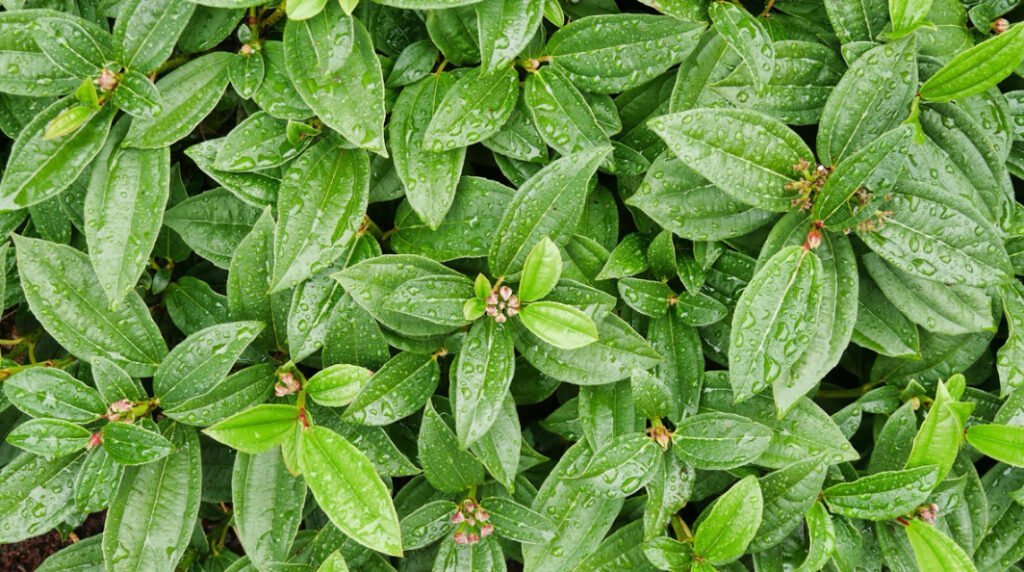On July 23, 2025, X user Safo Nyame Herbel Therapeutics (@safonyameherbal) shared a post recommending garlic, ginger, and dandelion for treating cancer.
“For the sake of cancer, daily intake of a clove of garlic, ginger, or dandelion is highly recommended. Once chronic inflammation is eliminated, you’ve reduced your cancer risk by almost 90%,” the post reads.
As of July 26, 2025, it had garnered over 39,000 views and 345 reposts.
Screenshot of the claim about garlic and dandelion curing cancers
Safo’s post is one of several viral publications on social media that continue to spread unverified claims about herbs’ healing powers.
A month earlier, on June 21, 2025, an X user Chief Herbalist (@HerbalistChief) claimed that corn silk, a common plant material found beneath corn husks, can cure bedwetting, prostate enlargement, kidney stones, and more. The post attracted widespread attention on X, garnering over 2,500 likes, 638 reposts, and 158,700 views.
Screenshot of the claim about corn silk curing betting
In the comment section, many users show enthusiasm for the potential potency of the herb. For example, an X user, ILONDU Nnamdi Zin-jay (@zinnyboi), wrote,
“Wow!! Almost every plant in this universe has one or two healing properties. Nature is indeed God’s gift to mankind…”
Another X user, Nyaboke O (@romiboke), supported the claim: “I like the fact that natural remedies are not processed. Boil and drink. Dry, boil, and drink. Burn to the ass and apply. Simple!!!”
However, not all users agree with the Chief Herbalist’s claim. Acheampong Boateng (@AcheampongBoat8) responded, “One day, this guy will tell people to drink urine.”
The Liberalist found that Boateng’s scepticism stemmed from the Chief Herbalist’s history of posting similar health-related claims. We found identical unverified posts on the Chief Herbalist’s timeline on X. For instance, on June 3, 2025, he claimed that Siam Weed could treat cervical cancer, hypertension, stomach ulcer, waist pain, and diabetes.
He asked his followers to boil a handful of Siam Weed leaves and drink a teaspoon twice daily.
The Liberalist also found a TikTok video by @Bryaentherbal, identified as Chief Physician (ABAKAH MBEA), recommending Siam weed for back pain.
“For severe back pains, get the fresh roots of Siam Weed cut into smaller pieces and boil for 20 minutes. Waist pain will vanish. Other benefits: Ovarian cyst, Wound, Cervical cancer, Diabetes, Hypertension, Waist pain, Gout, Stomach ulcer. Boil a handful of fresh or dried leaves in water. Drink a teacupful twice daily,” parts of @Bryaentherbal’s post reads.
Screenshot of the claim about the siam seed.
As herbal prescriptions became popular on social media, so did health experts’ concern about the dangers of self-medication and misinformation.
A survey published by the United States’ National Library of Medicine, in collaboration with Nigerian researchers, shows that 66.8 per cent of Lagos’s population uses traditional medicine. In Ibadan, it is 81.6 per cent.
Researchers in another study published by the National Library of Medicine noted that consuming herbal medicines without the prescription or guidance of a medical practitioner poses a risk of liver damage, kidney failure, stomach upset, and diarrhoea. They said this because herbal mixtures contain some bioactive compounds that could harm the body.
Given the public health implications of using unhealthy herbal mixtures, The Liberalist examined the scientific basis of these claims.
Claim 1: Clove of Garlic, Ginger, or Dandelion can reduce cancer risk by 90 per cent
Verdict: Insufficient evidence! While garlic, ginger, and dandelion may support overall health and show some potential in scientific studies, there is no conclusive evidence that they reduce cancer risk by 90 per cent.
Verification
According to the World Health Organisation, “cancer is a large group of diseases that can start in almost any organ or tissue of the body when abnormal cells grow uncontrollably.”
Garlic, ginger, and dandelion are recognised for their anti-inflammatory properties, which help treat heart diseases and cancer. Research published by the National Library of Medicine confirmed this in its study of garlic and its anti-cancer potential.
The study concludes that compounds found in garlic may help slow the growth and spread of cancer cells and limit their ability to migrate and invade other tissues. However, despite this, the researchers noted that more studies are needed to fully understand how garlic works against cancer across different organs.
Abbas Toriola, an Ogun State Teaching Hospital medical doctor, corroborated this stance. He noted that even though Garlic, Ginger, and Dandelion have anti-inflammatory components, cancer treatment is far more complex for anyone to claim the plants’ potency of reducing cancer risk by 90 percent without revealing the basis of his claim.
“Modern medicine is evidence-based. And before you claim that something treats or cures something, you have to present well-documented evidence to that effect,” he said.
“Any valid medical claim must answer: Where was the research conducted? How many people were tested? Were these people medically confirmed to have the disease? Did objective tests confirm the treatment outcome? Any claim that doesn’t put all of these forward in this modern age is just an empty, sensational one.”
Claim 2: Corn silk treats bedwetting, prostate enlargement, and kidney problems.
Verdict: False! While corn silk is rich in natural compounds and has a long history in traditional medicine, no credible scientific evidence proves it can treat bedwetting, prostate enlargement, or kidney problems.
Verification
Corn silk is the long, thread-like strands beneath the corn (maize) husk. It contains vitamins, minerals, carbohydrates, proteins, and chemicals that may have antioxidant effects and influence blood sugar and blood pressure levels.
According to WebMD, a health information platform, some people use corn silk to manage chest pain, high blood pressure, diabetes, and obesity. Still, there is no solid scientific evidence supporting these uses.
“Corn silk is commonly consumed in foods. However, there is insufficient reliable information to determine if it is safe when used in larger amounts as a medicine. Side effects seem to be rare but might include decreased potassium and sodium levels in the blood,” an article on WebMD reads.
A Cleveland Clinic article further stated that, “despite centuries of herbal remedy use, there are limited studies on the health benefits of corn silk. Much of the existing research took place on animals and not humans.”
Dr. Toriola told The Liberalist that corn silk is not a proven treatment or cure for diabetes, high blood pressure, and high cholesterol.
“Individuals with these conditions should consult a healthcare professional for proper diagnosis and treatment, rather than relying on unsubstantiated claims,” he said.
To corroborate Dr. Toriola’s submission, Olutayo Alebiosu, a professor of medicine at Osun State University’s Faculty of Clinical Sciences, confirmed that corn silk cannot be used to treat a bladder infection, kidney stone, bedwetting, and other infections as claimed.
He said, “My advice to people with the listed health conditions is that they shouldn’t look for a cheap way out. Visit medical doctors for proper treatment. People with these conditions should not joke with them at all.”
Claim 3: Siam weed treats cervical cancer, hypertension, waist pain, and diabetes
Verdict: Misleading! While Siam Weed shows some promise in early studies for wound healing and managing hypertension and diabetes, there’s no credible evidence that it cures cervical cancer, waist pain, or chronic diseases. Research is limited and unproven in humans.
Verification
According to the National Cancer Institute, cervical cancer forms in tissues of the cervix, the organ connecting the uterus and vagina.
Research published on the United States National Library of Medicine website shows that Siam Weed, known as “Chromolaena odorata,” is a traditional medicinal plant commonly used for wound-healing properties. The research confirmed that the plant possesses antioxidants that enhance wound healing and antibacterial activities that reduce wound infections.
A study by the Journal of Ethnopharmacology also confirmed the presence of several antioxidants and anti-inflammatory bioactive components in Siam Weed.
However, none of the above studies mentions the plant’s ability to treat cervical cancer, hypertension, waist pain, or diabetes.
According to the National Cancer Institute, various treatments are used to treat cancer, Including Surgery, Radiation therapy, Chemotherapy, Targeted therapy, Immunotherapy, and Clinical trials. None of these methods includes the use of herbal medication or Siam Weed. The closest to herbal medication is Chemotherapy, which uses chemical agents, including plant-made drugs, to treat or control disease. Meanwhile, the American Cancer Society lists Cisplatin, Carboplatin, Bevacizumab (Avastin), Paclitaxel (Taxol®), Topotecan (Hycamtin), Docetaxel (Taxotere), and Fluorouracil (5-FU) as drugs used to treat cervical cancer. Nowhere was Siam Weed listed.
In an interview with The Liberalist, Abdul Yakub, a medical practitioner at Kano State Teaching Hospital, said the claim that Siam weed can treat cervical cancer isn’t valid.
“No verifiable cure for cancer as I write this. Those claiming to have cures are only deceiving people,” he said.
What about hypertension, waist pain, and diabetes?
According to the World Health Organisation, hypertension, also known as high blood pressure, occurs when the pressure in one’s blood vessels is too high, up to 140/90 millimetres of mercury (mmHg) or higher. Treatment includes a combination of lifestyle changes and medications.
Over the years, Siam Weed has been found in medications used by traditional healthcare professionals to manage hypertension. Research published by the Asian Journal of Pharmaceutical Research in 2014 investigated the potency of this method.
The study shows that Chromolaena odorata leaves (Siam Weed) may help lower blood pressure and support key organs like the liver and kidneys when made into a simple water extract. The extract reduced harmful blood markers when the research was conducted in salt-loaded rats, which mimic high blood pressure in humans. It improved the balance of minerals like sodium and potassium, much like common blood pressure drugs.
It also helped improve blood quality by boosting red and white blood cells and reversing low platelet levels. These effects are possible due to the plant’s natural compounds, which include antioxidants and essential nutrients. Overall, the extract showed strong potential for managing hypertension.
Waist pain is in the lower back area around the waistline, just above the buttocks. It is used to describe lumbar pain, which is commonly referred to as lower back pain.
The Liberalist found that Siam weed (Chromolaena odorata) is traditionally used for treating external injuries, such as cuts, wounds, and burns. A study by the Research Journal of Pharmacy and Technology supports this use by showing that an extract from the plant helped heal second-degree burns in rats by reducing the size of the wound and lowering inflammation. This is due to the plant’s natural anti-inflammatory and antioxidant properties, which aid the skin’s healing process.
According to Theodore Fields, an attending physician at the Hospital for Special Surgery and professor of Clinical Medicine at Weill Cornell Medical College, treatment for waist or lower back pain depends on the cause. In most people, he wrote, the pain is a mechanical cause like muscle strain, poor posture, lifting injuries, or spinal degeneration, and most of these cases improve within a few days or weeks with basic treatments like physical therapy, exercise, and anti-inflammatory medications.
However, Dr. Fields noted, in a more severe case, “the physician will need to take a careful medical history and do a physical exam to look for certain red flags that indicate the need for an X-ray or other imaging test. In most cases, however, imaging such as X-ray, MRI (magnetic resonance imaging), or CT (computerised tomography) scan is unnecessary.”
Diabetes is a chronic disease in which the body doesn’t produce enough insulin or cannot effectively use the insulin it produces, leading to high blood sugar levels. Over time, this can damage various organs.
Research by the Department of General Practice–Family Medicine and Internal Diseases at Kharkiv National Medical University in Ukraine found that Siam weed (Chromolaena odorata) contains several bioactive compounds, including alkaloids, flavonoids, flavanones, essential oils, saponins, tannins, and terpenoids. These phytochemical components are believed to contribute to the plant’s potential antidiabetic effects, making Siam weed a possible natural alternative for helping to lower blood glucose levels.
The study explored the antidiabetic potential of Siam weed (Chromolaena odorata) in patients who were already taking the antidiabetic drug Glibenclamide. When Siam weed extract was added to the treatment of half of these patients, their blood sugar levels showed a significant decrease. Based on these findings, the researchers concluded that Chromolaena odorata extract has promising antidiabetic properties and could serve as a natural supplement alongside conventional diabetes treatments.
However, the researchers wrote, “the study of these additional potential therapeutic effects of Siam weed is a prospect for our further research.”
A later study, published in 2024 in the Pharmacological Research—Natural Products journal, investigated the usage of Chromolaena Odorata (Siam Weed) as an anti-ulcer, antioxidant, antihypertensive, antihyperglycemic, and anticancer agent, among others. The study concluded that while the Siam Weed plant possesses numerous medicinal properties, including antioxidants, wound healing, antimicrobial, antidiabetic, antiulcer, anti-thrombocytopenia, and many more, the plant is yet to be included in the list of medicinal plants.
“This plant [Siam Weed] is known as an invasive weed, but has a wide range of biological activities. Though presently there are no FDA (Food and Drug Administration) approved compounds purified from C. odorata,” the study reads.
According to Dr. Yakub, while some plants may contain bioactive compounds, claims of cure, especially for complex diseases like cancer, require rigorous, peer-reviewed research and clinical validation. At present, no such evidence exists for Siam weed’s use in treating the listed conditions.
Recent scientific research has also examined the safety of using Chromolaena odorata in traditional medicine. A study involving albino rats evaluated the effects of ethanolic extracts from the plant on their kidneys and intestines over six weeks. Blood tests revealed elevated urea and creatinine levels, common indicators of kidney stress, though the kidney tissues themselves appeared normal under a microscope. The researchers believe the revelation suggests the extract may trigger early or reversible kidney strain, even without visible damage.
However, the effects on the digestive system were more explicit. The researchers observed clear signs of tissue damage and inflammation in the rats’ small intestines, particularly at higher doses. The inner intestinal lining showed signs of irritation and erosion. These findings raise concerns about the potential risks of consuming large or long-term doses of Siam Weed without medical supervision.
Conclusion
The different cure claims about Garlic, Corn silk, and Siam weed are false and misleading. While these plants have beneficial properties, they need to be studied better, as most studies so far are inconclusive and were done in animals, not humans.















